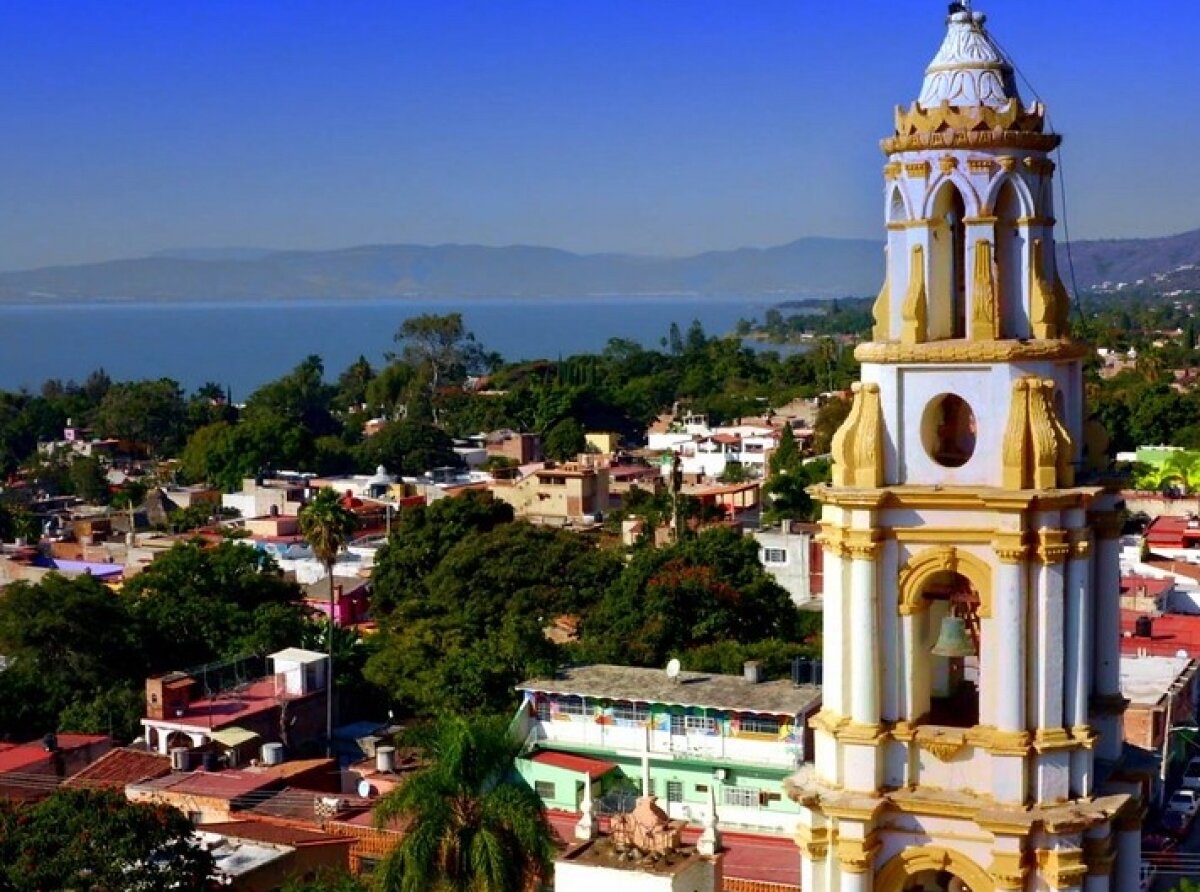The Pueblos Mágicos, or Magical Towns of Mexico, are 132 designated towns throughout Mexico recognized for their beauty, history, and cultural importance.
The Pueblo Mágico program began at a national level back in 2001 to promote the special qualitites of culture, history, architecture, and gastronomy in towns of rich heritage with high tourist potential.
The designation is awarded to those communities that over time have maintained their original architecture, traditions, history and culture; and have come to symbolize and enhance the national identity of Mexico. These qualities combined with their exceptional beauty make them Magical Towns connecting visitors with Mexico’s traditions and culture. Jalisco is home to 9 of these Magical Towns.
AJIJIC

Ajijic is a small town of about 11,000 residents at the foot of the mountains and on the shore of Lake Chapala, about a 40 minute drive from Guadalajara. Its name comes from the Nahuatl word Axixic, which means "place where water gushes out." In fact, in 1531 Don Andres Carlos and Fray Martin founded the town because it had a good source of water, and it is one of the oldest villages in Western Mexico.
Ajijic sits at just over 5,000 feet, and enjoys a mild climate year round. Due to its tropical latitude, the sun is warm year-round, and due to its elevation, it is seldom unpleasantly hot or humid. Average rainfall is just over 30 inches per year, with the rainy season from June to October.

Because of the pleasant weather, plus its desirable tourist status, Ajijic has become a haven for American and Canadian ex-pats, and it is estimated that they make up more than half the population in the winter months. Tourists and foreigners are attracted to the beauty, the cultural heritage, the colonial architecture, the artistic community, and the peace and relaxation of the natural surroundings in this unhurried, laid-back town.

Its tree-lined cobblestone streets are home to many restaurants featuring a bevy of international cuisine, shops, galleries, cafes, and bars. Along the waterfront is a huge shady park with playgrounds, sports fields, basketball courts, exercise equipment, an amphitheater, a skate park, and a gorgeous view across the lake. And there are several beautiful churches including the Parroquia de San Andrés Apostol built in 1754, a historical cemetery, a lakefront beach and boardwalk, and a pier extending into Lake Chapala.


Among the tourist activities are horseback riding, mountain bike riding, motorcycling, a nearby water park and golf course, walks along the boardwalk where you can see spectacular sunsets, and boat tours on the lake.
In December 2020, Ajijic received the distinction of being the new magical town of Jalisco, recognized for its religious festivities and a myriad of artistic and cultural activities.

Ajijic is a very festive village with many holidays, special events and parades about once a month. Mexico's National Chili Cook-Off has been held in Ajijic since 1978 and attracts thousands of Mexican and international visitors each February, in addition to scores of vendors selling a large variety of items including art, crafts, clothing and souvenirs.

Also in February is the Ajijic Carnaval with the unique tradition of the sayacas, where townspeople dress in masks, often with men dressed as women and women as men, and they carry a bag of flour and hunt down the children who have lined the streets for the parade and throw flour on them, until everyone is covered!

Ajijic’s “Chupinaya Carrera de Montana” attracts about 500 athletes from all over Mexico each July for a grueling 13.8 kilometer foot race to the summit of Cerro La Chupinaya (7,874 feet) and back to the Ajijic Plaza.
Each September the Regatta de Globos event attracts hundreds of visitors, where local groups enter their homemade tissue paper balloons.

Then in November Ajijic puts on a spectacular Day of the Dead celebration with decorations, altars, and festivities. On Marcos Castellanos Street right across from the Parroquia de San Andrés Apostol you can find the “Day of the Dead Wall,” which is a collage of clay tiles with skulls in relief, each one named and representing a deceased resident, and each one with a place for a candle under the chin, to be lit during the Day of the Dead celebration.
The biggest event of the year is the San Andreas Fiesta in late November dedicated to Ajijic’s patron saint, dominating Ajijic’s central plaza and surrounding streets for nine days in late November with music, parades, food, and fireworks.
To see a beautiful video and for more information on the Magic Towns of Jalisco, you can visit the website:
https://tianguispueblosmagicos.mx
For more information and beautiful pictures of Ajijic, visit the website:
https://pueblosmagicos.mexicodesconocido.com.mx/jalisco/ajijic
For a complete guide to shops, restaurants, attractions, and events for Ajijic and Lake Chapala, visit the website:

